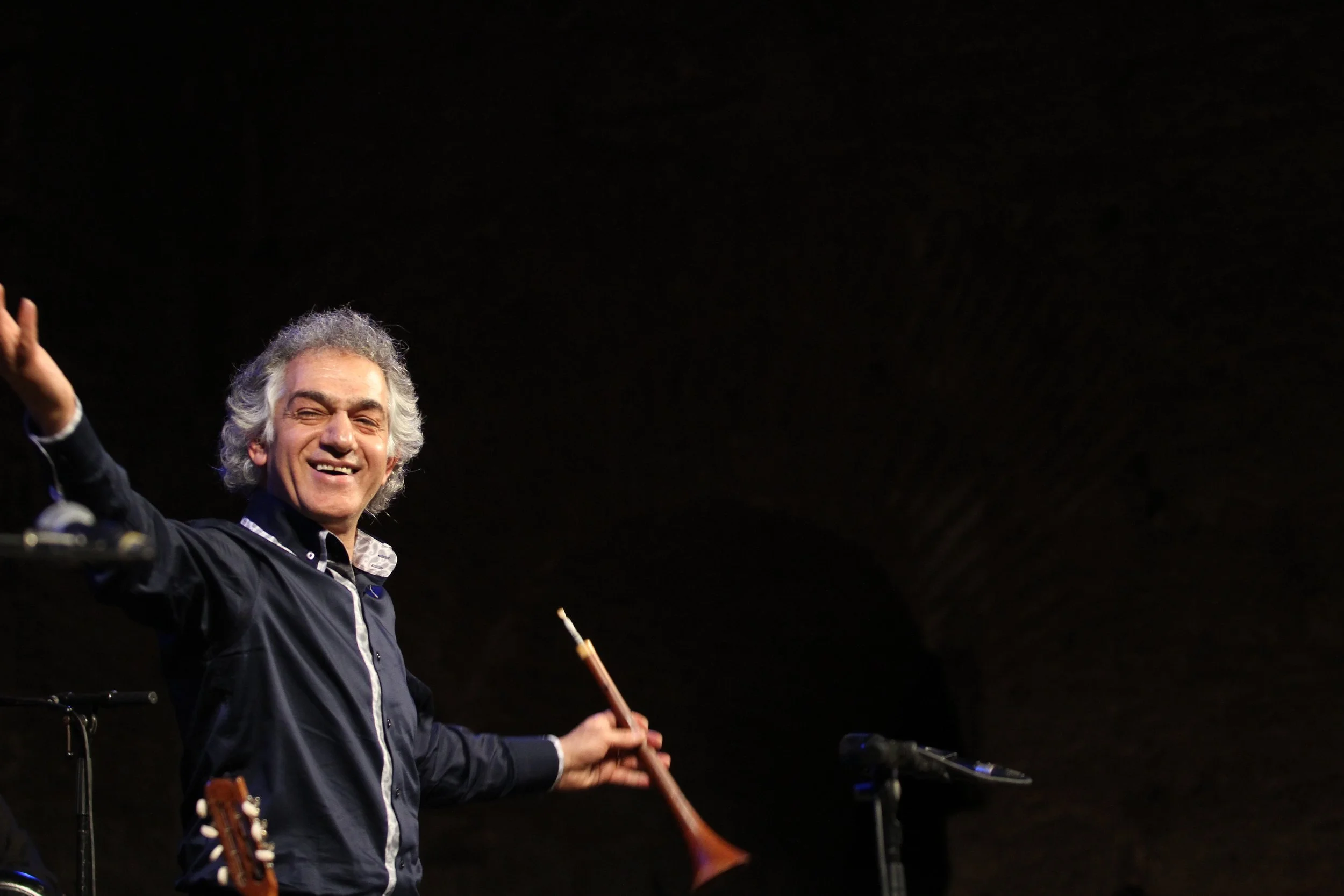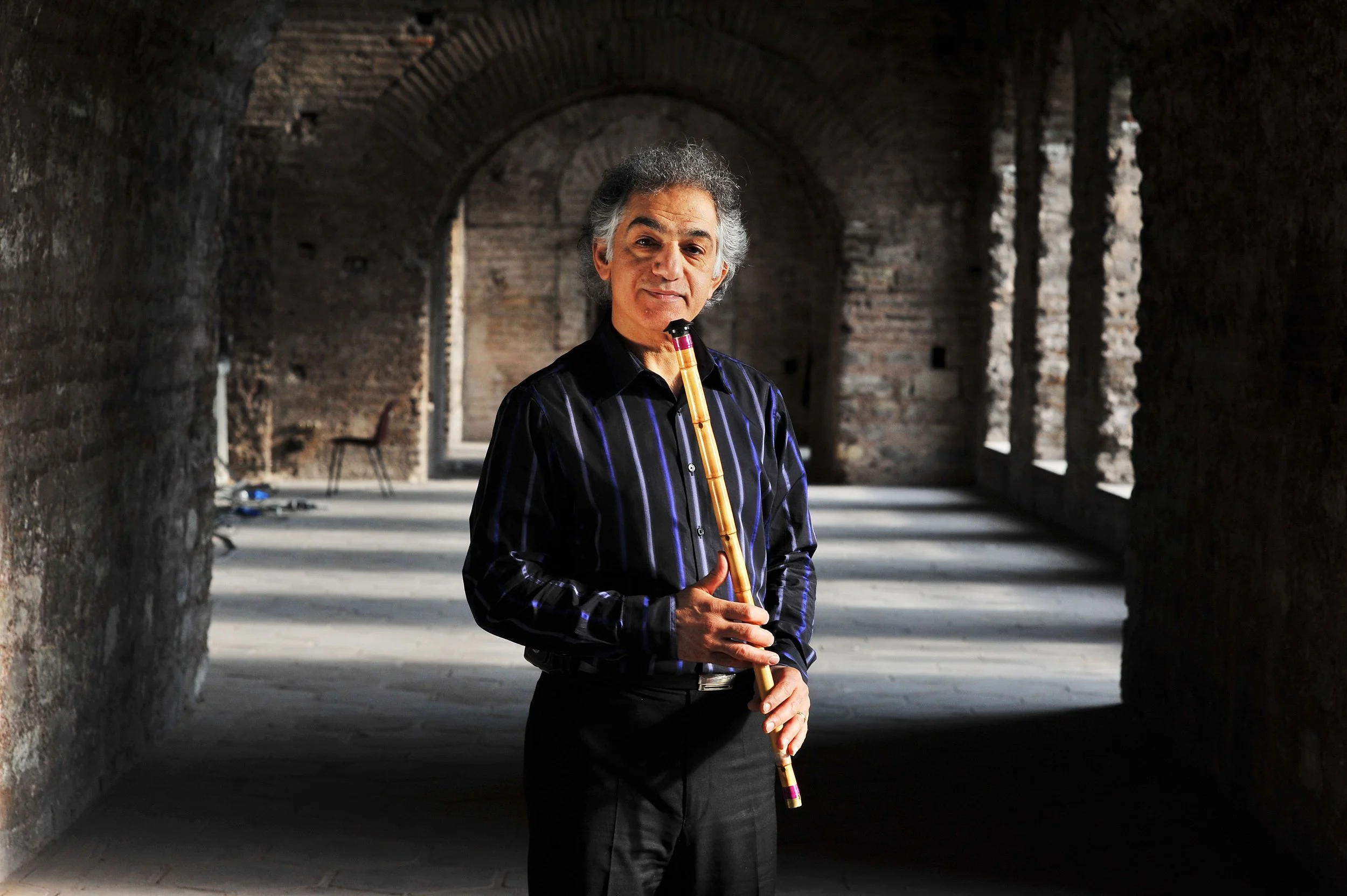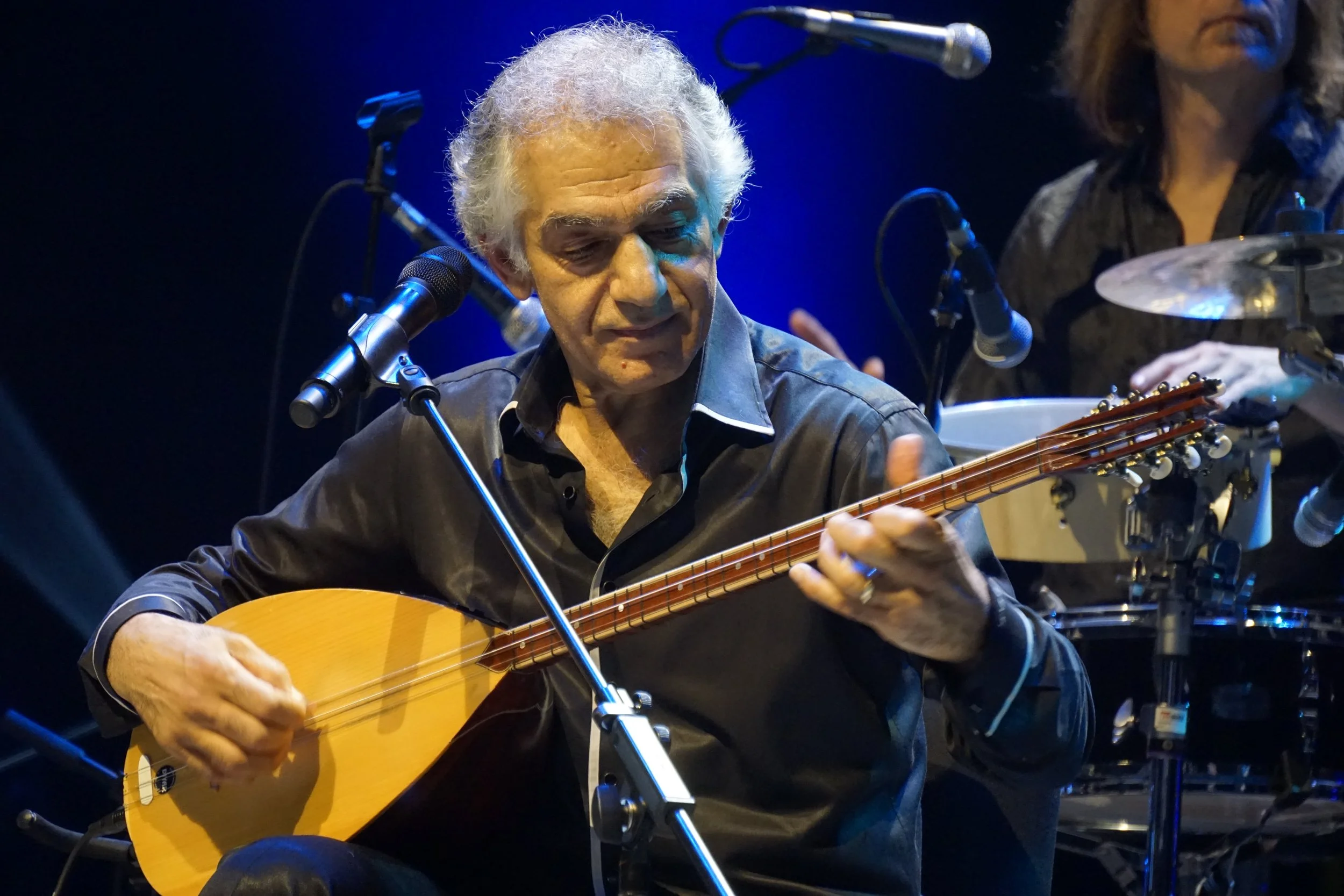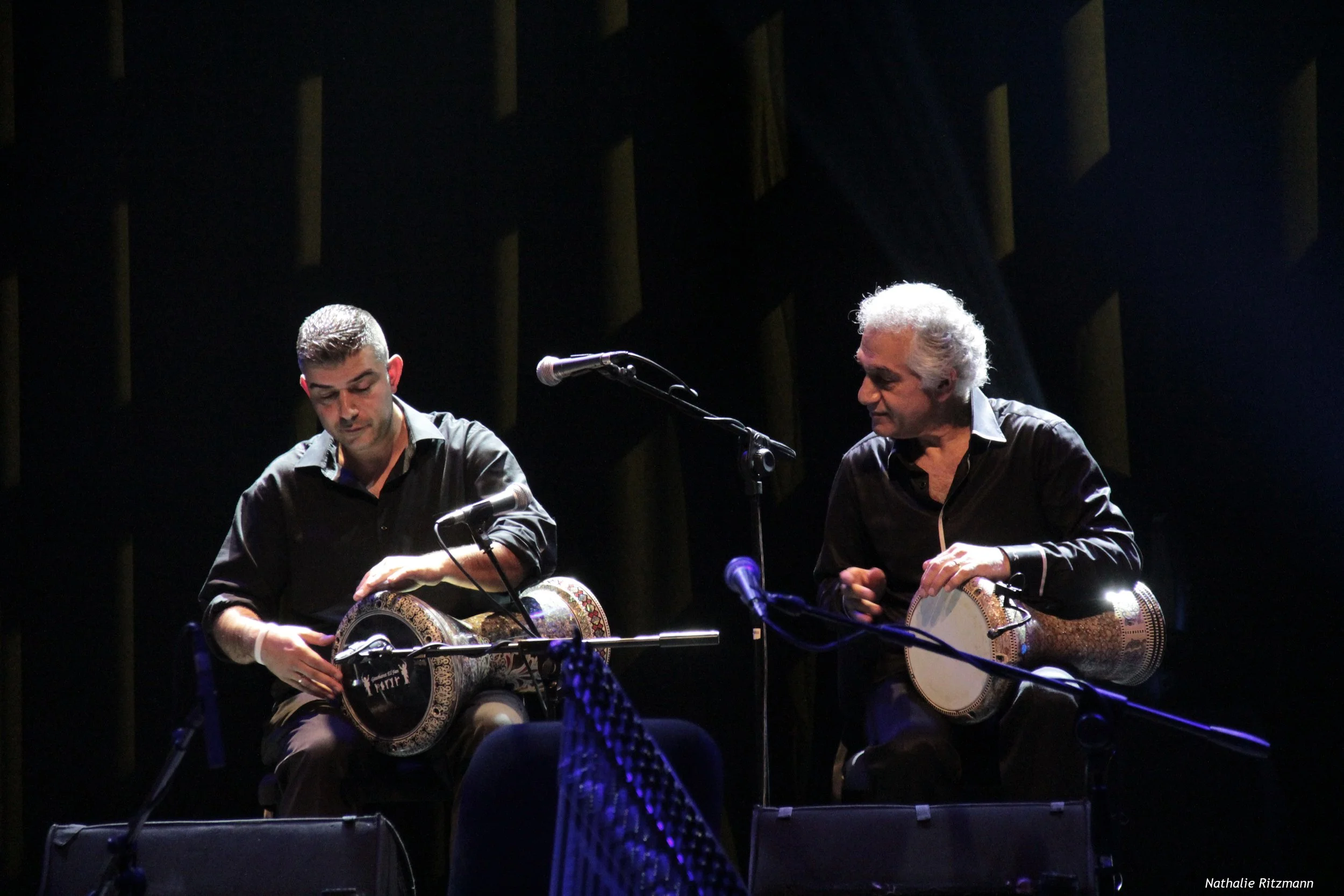
Omar Faruk
Honored as both a peacemaker and a virtuoso, Omar Faruk’s work transcends political boundaries while preserving traditional sensibilities in a way few artists can.
A musical prodigy, Omar Faruk was born in Adana, Turkey, into a musical family that nurtured his early talent. At the age of eight, he began his musical journey by learning the kaval, a small diatonic flute. Encouraged by his older brother and a supportive uncle who owned a music store, he received lessons and quickly developed his skills. He learned the intricate rhythms of Turkish music, how to read scales, and eventually mastered several other instruments: the ney (bamboo flute), zurna (a double-reed, oboe-like instrument with a buzzing tone), bağlama (long-necked lute), oud (classical lute), and various percussion instruments. By the age of twelve, he was already performing professionally at local venues. At the same time, he studied religion and considered becoming a cleric, or imam.
In 1967, at the age of sixteen, he moved to Istanbul, where he and his brother spent the next decade working as in-demand session musicians. While Omar Faruk remained true to his folkloric roots, this period exposed him to Arabesque, Turkish classical, and Western styles, as well as the creative possibilities of studio production. During this time, he also encountered the Mevlevi Dervishes, the ancient Sufi order of Turkey. Though he didn’t formally join the order, its head neyzen (ney player), Aka Gündüz Kutbay, became a major source of inspiration. Omar Faruk was deeply influenced by the Dervishes’ mystical approach and their fusion of sound and spirit. Around this time, he was also introduced to Hatha Yoga and later to Tai Chi, which he still practices daily.
Omar Faruk’s skills flourished in Istanbul, where he recorded with many of Turkey’s top musicians, including Orhan Gencebay, flutist and saxophonist İsmet Sıral, and percussionist Burhan Tonguç, among others. After establishing himself as one of the country’s top session musicians, he began touring in Europe and Australia. By 1971, at the age of 20, he made his first tour of the United States as part of a Turkish classical/folk ensemble. During that tour, he met his future wife, Suzan, and in 1976 he moved to upstate New York to marry her.
In the U.S., Omar Faruk found few opportunities for Turkish musicians. He formed a band called “The Sultans” with an Egyptian keyboardist, a Greek bouzouki player, and his brother-in-law on percussion. What began as a pop band quickly evolved into a Pan–Near Eastern ensemble that attracted attention within the Middle Eastern dance community. They recorded five albums during this period, but Omar Faruk remained relatively unknown outside that circle.
That changed in 1988, when he met producer Brian Keane. Over the following years, the two would go on to create six albums together, launching Omar Faruk into the global world music scene.
Since then, Omar Faruk Tekbilek has become one of the world’s foremost exponents of Middle Eastern music. A master multi-instrumentalist, he has collaborated with many internationally acclaimed artists, including Karl Berger, Ginger Baker, Youssou N’Dour, Ofra Haza, Yasmin Levy, Simon Shaheen, Hossam Ramzy, Glen Velez, Bill Laswell, Mike Mainieri, Peter Erskine, Trilok Gurtu, Omar Sosa, Enrique Morente, Kodo (Japan), Tomatito, Jai Uttal, Steve Shehan, and Riverdance, among others. He has contributed to numerous film and television scores, participated in many world sacred music recordings, and toured extensively across the Middle East, Europe, Australia, North and South America.
Omar Faruk’s music is deeply rooted in tradition but also shaped by contemporary influences. He describes his approach as “cosmic,” and his commitment to music runs deep. The four pillars of his creativity — mysticism, folklore, romance, and imagination — reflect his belief in diversity within unity. Like Omar Faruk himself, his music transcends borders.



